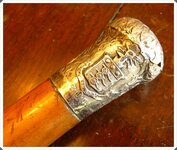This past summer I found the top to what I feel must have been a walking stick. There's a lot of detail on this piece and I feel it's likely made of spelter. I collect early figural oil lamps and the oil lamp figures are often cast in spelter.
Spelter, while sometimes used merely as a synonym for zinc, is often used to identify a zinc alloy. In this sense, it might be an alloy of equal parts copper and zinc, i.e. a brass, used for hard soldering and brazing, or as an alloy, containing lead, that is used instead of bronze. In this usage, it was common for many 19th-century cheap, cast articles such as candlesticks and clock cases and early 20th-century Art Nouveau ornaments and Art Deco figures. The word "pewter" is thought to be derived from the word "spelter".
I initially started by 'tumbling' the canes head in my Lortone polisher for 12 hours to remove the heavier corrosion, as I didn't want the end result to look 'too polished'. I then tumbled it for another 24 hours to achieve the look you now see. I then bought a walking stick made of walnut in a second-hand shop for $3. For the brass 'cap' on the bottom, I used part of an old school bell I found a few years ago. I then sanded and coated the wood with 5 coats of dark walnut stain.
Somehow, I knew from the moment I found this cane handle in the woods behind the same 1880 school that I found the bell at that this piece deserved to be properly restored one day!
Thanks for looking,
Dave
Spelter, while sometimes used merely as a synonym for zinc, is often used to identify a zinc alloy. In this sense, it might be an alloy of equal parts copper and zinc, i.e. a brass, used for hard soldering and brazing, or as an alloy, containing lead, that is used instead of bronze. In this usage, it was common for many 19th-century cheap, cast articles such as candlesticks and clock cases and early 20th-century Art Nouveau ornaments and Art Deco figures. The word "pewter" is thought to be derived from the word "spelter".
I initially started by 'tumbling' the canes head in my Lortone polisher for 12 hours to remove the heavier corrosion, as I didn't want the end result to look 'too polished'. I then tumbled it for another 24 hours to achieve the look you now see. I then bought a walking stick made of walnut in a second-hand shop for $3. For the brass 'cap' on the bottom, I used part of an old school bell I found a few years ago. I then sanded and coated the wood with 5 coats of dark walnut stain.
Somehow, I knew from the moment I found this cane handle in the woods behind the same 1880 school that I found the bell at that this piece deserved to be properly restored one day!
Thanks for looking,
Dave



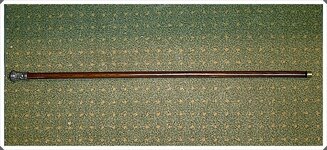
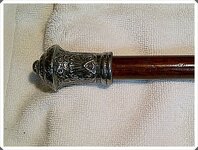
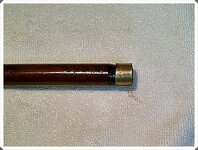
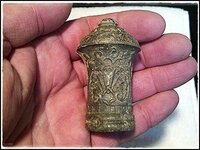
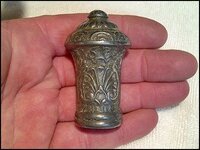
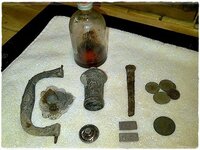



 Lucky for me the ladies who were there were all freezing cold and in desperate need of some 'Northern Comfort' to help them get warm!
Lucky for me the ladies who were there were all freezing cold and in desperate need of some 'Northern Comfort' to help them get warm! 
